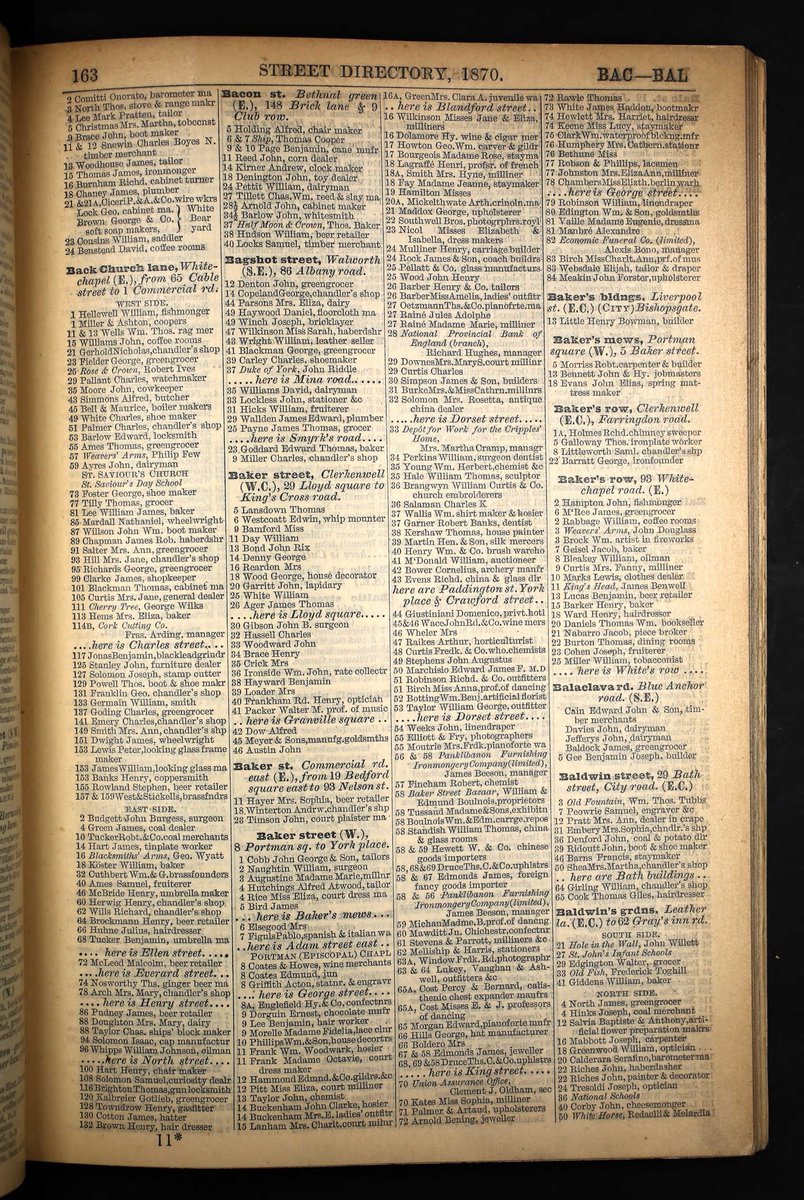Trade directories can be used for tracing businesses, people, or learning the history of an area or place. If you have found your ancestor’s address on a census or electoral register you can then check the trade directory to see what their street was like at that time. 1/6
They are a great source for learning the socio-economic nature of where the family lived. The type of business gives an indication of the class of the neighbourhood, as well as little details to see where your ancestors shopped and some of the names of the people they knew. 2/6
For example, in the 1862 directory, Mount Terrace in Lambeth includes the Beer retailer, tobacconist, coffee rooms, and baker. In contrast at the more affluent Montague Place in Islington there are surgeons and solicitors listed. 3/6
If your ancestor was a business owner it is possible they are included by their name. During the 19th century most businesses had the owners name as the business name. So, you can search the trade directories by a person’s name. 4/6
Though the indexes on Ancestry are limited to every five years. So, you might find better results by browsing. You find limited information about the business itself though, you learn where it was located, and if you search multiple volumes, how many years it was in operation 5/6
In addition, many people are listed by name, even without a profession, including people who would not have been eligible to vote. So, trade directories can also be used as an alternative to the electoral registers for finding addresses for your ancestors between censuses. 6/6

 Read on Twitter
Read on Twitter


